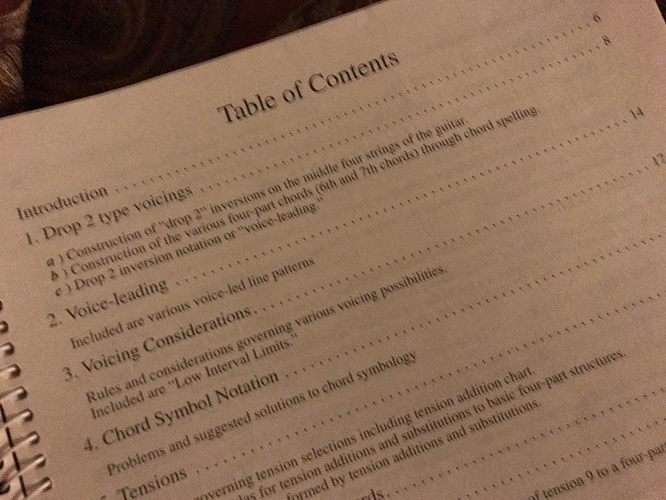Hey there @AGTG, I think I answered your latter question, but not the first.
The FordScales Open/Closed patterns are moveable, and intersect with the FordScales Chromatic pattern, and themselves.
The open and closed refer to the general spread of the hand while playing, the closed pattern occupying four frets (at least referencing diatonic major), and the open pattern occupies five (again referencing major).
The Berklee positions I originally learned are based around stretching from the pinky or from the index finger to reach notes outside of the boxes. The ring and middle are thought to stay together in their diagrams… That led to exploration of wider voicings more akin to what I perceived my primary music hero, Allan Holdsworth, doing in performance. The moveable FordScales Open/Closed patterns have some of the advantages of three note per string playing, and one may find utility in being able to identify a handy pattern anywhere they happen to be on the neck.
The FordScales Open/Closed Patterns don’t imply any particular fingering per se, just general open and closed hand moments. Sliding, bending, stretching… All of the guitarisms we enjoy are viable within the frameworks.
Here is an example of the open pattern joining with itself. One may see why I moved on to other visualizations after playing with them for awhile. I think @patternblue did too albeit perhaps more akin to Goodrick’s “Moveable Mini Positions” from The Advancing Guitarist?
4 5 6
1 2 3
4 5 6 7
1 2 3
5 6 7
And lets say one needed to play a whole-step up with a chord change, one may find a pattern within reach quickly, the O’s represent the pattern immediately above, with the pattern for the change overlaying it with X’s. The O’s in parenthesis represent tones not present after the change.
X (O) X X O
X (O) X X O
(O) X X X O
(O) X X X
O O O
Folks have found it all very powerful, but please be careful and prefer slides and position shifts to stretches if one is not used to playing in the wider stretch realm. If one is playing scales up and down, there may be more hand friendly, perhaps easier, ways. On the other hand, if one is improvising melodies on the fly the patterns become more—please excuse the pun—handy.




 . I have to sacrifice certain things—for example, no bar chords (as I can’t finger them!)—but I can’t do that anyway, as it sounds terrible on my amp given my distortion and effects. (Indeed, I rarely play more than 4 notes per chord, so 4ths work well for me.) I navigate with many tricks, but the orange boxes are probably the most important.
. I have to sacrifice certain things—for example, no bar chords (as I can’t finger them!)—but I can’t do that anyway, as it sounds terrible on my amp given my distortion and effects. (Indeed, I rarely play more than 4 notes per chord, so 4ths work well for me.) I navigate with many tricks, but the orange boxes are probably the most important.